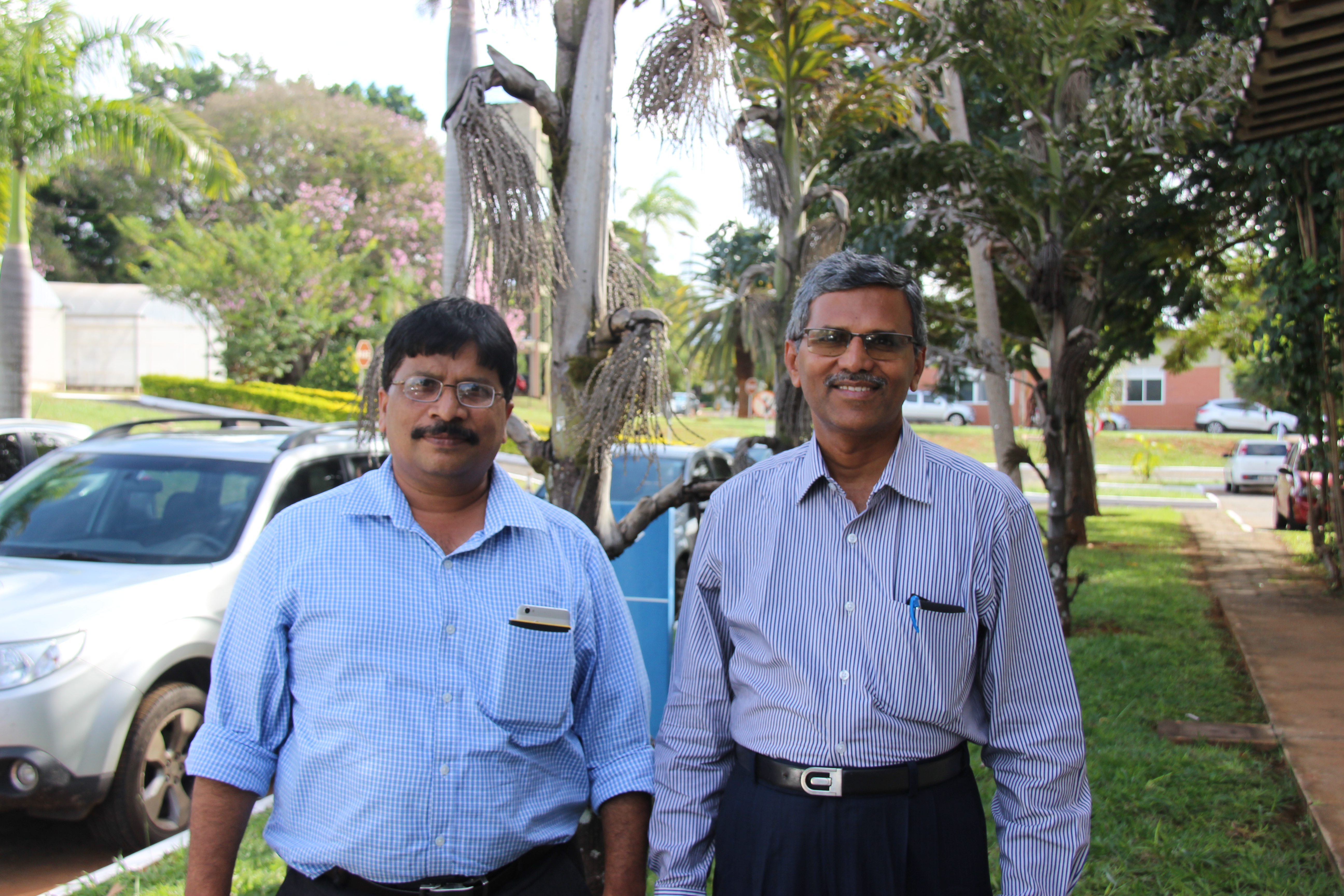Indian researchers visit Embrapa and have IVP training
Indian researchers visit Embrapa and have IVP training
The Brazilian experience in in vitro embryo production (IVP) called the attention of Indian researchers Dr. Veera Bramhaiah and Dr. M. Mutha Rao, both from the Sri Venkateswara Veterinary University (Tirupati, India). For the last two weeks, they were trained in the technique at Embrapa Genetic Resources and Biotechnology labs, and at the Sucupira Experimental Field, located 35 km away from Brasília, DF, Brazil.
The researcher Margot Dode hosted and trained the researchers in follicular aspiration, embryo cryopreservation, and oocyte selection,fundamental steps for in vitro embryo production. “Brazil is the most important country in the in vitro production of embryos, it is a leading player compared to other countries. Because we work with similar animals, our protocols can be totally applied to those in India”, explained Dode.
The similarity between the Brazilian and Indian herd is due to the fact the main Brazilian breeds, such as Nelore, Gyr and Guzerat, originated from India. The Nelore breed, for example, is the Indian breed Ongole. Actually, Nelore is the name of a district located in the Indian East coast, where the first animals were shipped to Brazil.
The Indian Reseacher Dr. M. Mutha Rao observed that Brazil and India combined own half of the world’s bovine cattle herd. “Between the 1940s and 1990s, over a thousand animals were brought from India to Brazil”, said Dr. Rao. However, because of how animal breeding and reproduction techniques have evolved in Brazil, breeds that arrived here have lost their original characteristics.
Yet in India, where bovines are considered sacred, those breeds remain pure, and scientific studies have targeted improvements to milk production, nowadays the only source of animal protein in the diet of around 80% of Indians.
“We are the largest milk producers of the world, with more than 130 million tons per year. Our main goal is to increasingly improve milk quality”, said the researcher Dr. Veera Bramhaiah.
Professor of the Sri Venkateswara University Department of Animal Reproduction, Gynaecology and Obstetrics, he affirmed that Indian cattle is famous for the production of milk with A2 beta-casein protein. The knowledge acquired during the IVP training at Embrapa will be useful, according to Dr. Veera, to select donors and breeders that produce a higher quantity of A2A2 protein in the milk, to which the Indian researchers attribute medicinal and anti-allergic properties.
Proposed cooperation with India
The Indian researchers’ training held at Embrapa Genetic Resources and Biotechnology’s labs may have been the very first step to build a future partnership between India and Brazil, which will involve the training of more professionals in the field and the exchange of germplasm (semen and bovine embryos) between both countries.
The General Head of Embrapa Genetic Resources and Biotechnology, José Manuel Cabral, recalled that both Brazil and India belong to a group of countries known as BRICS – which, with Russia, India and South Africa, form a political group of multilateral cooperation. “We are going to formalize cooperation in which the main Indian interest is to update bio-techniques applied to animal reproduction, while ours is to deepen studies about Zebu breeds, especially the Ongole dairy cattle”, affirmed Cabral.
More about IVP
In vitro embryo production is the most commonly used bio-technique in animal breeding today, as it increases the number of descendants from a single cow in a shorter period of time. When comparing the potential of the reproduction bio-techniques of highest impact used nowadays by global cattle farming, we can affirm that with Artificial Insemination (AI), we can obtain a calf per year; classic embryo transfer (ET), one calf per month; however, by using IVP, we can produce a calf per week.
“The flagship of bio-techniques in animal reproduction still is IVP. It is an extremely important technique for our county and essential to the use of other bio-techniques”, explains Embrapa’s researcher Margot Dode. She says Brazil is currently the largest producer of in vitro bovine embryos of the world, representing 80% of the world´s market, and Embrapa has a fundamental role in that accomplishment.
Translation: Victoria Kortbawi
Proofreading: Mariana Medeiros
Irene Santana (MTb 11.354/DF)
Embrapa Genetic Resources and Biotechnology
cenargen.nco@embrapa.br
Phone number: +55 61 3448-4769
Further information on the topic
Citizen Attention Service (SAC)
www.embrapa.br/contact-us/sac/

